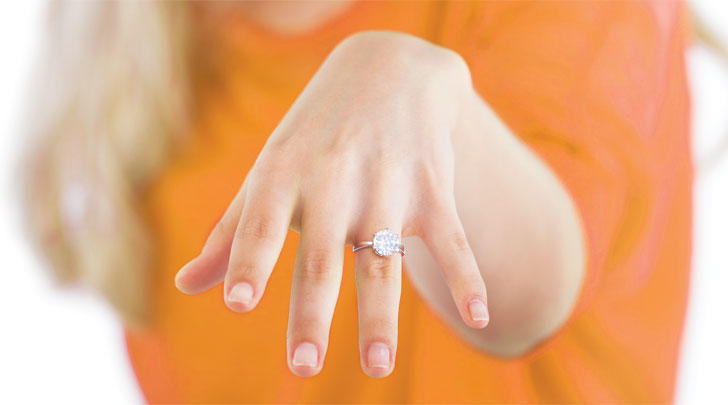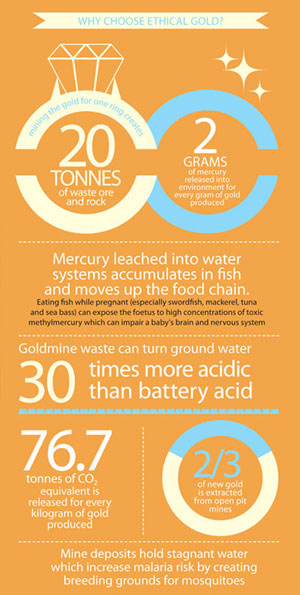What's greener?
My dilemma: Gold and diamonds
Dr Michelle Dickinson

Question
“I’m planning to buy an engagement ring (!) but I want to make sure all the materials are responsibly sourced. What should I do?” – Anon
Answer
Materials scientist Dr Michelle Dickinson replies:
“Gold and diamonds may be the most popular choice for engagement rings, but as you are dazzled by the intense sparkling around the jewellery store you might find the environmental impact could dull the shine.
Mining the gold and diamonds to create a single engagement ring with a one-carat stone removes an average of 250 tonnes of earth, produces 20 tonnes of toxic waste and releases 800kg of CO2 emissions*.
Years of dirty gold mining have ravaged landscapes, contaminated ecosystems and polluted water supplies by leaching out toxic waste including cyanide, arsenic and mercury. During the mining process, huge amounts of rock are churned up and either sprayed with cyanide creating a solution which trickles down to the base of the rock pile for collection, or is mixed with mercury to form an amalgam which is later heated to vaporise the mercury.
Both processes require large volumes of fresh water and have led to mine waste leaching into the ground and waterways, leaving behind barren land and polluted river basins.
Clearing vegetation and earth and rocks can also lead to severe erosion and entire ecosystems being destroyed.
And if that wasn’t bad enough, the gold and diamond industries are also responsible for over 200,000,000 tons in CO2 emissions per year**.
What’s the solution?
Thankfully, if your heart is set on a new traditional ring then there are several sustainable alternatives.
The best solution for a new ring is using man-made diamonds – which produce only a fifth of the CO2 emissions, and don’t involve mining – combined with New Zealand gold from mines complying with our strict environmental rules.
Next best is choosing platinum or gold sourced from fair trade mines – which don’t use cyanide, mercury or arsenic for extraction – combined with ethical natural diamonds with laser-inscribed track and trace numbers showing the mines where your ring materials came from.
The movement to support fair trade gold is big in places like the UK, but is only just catching on locally, with one registered fair trade gold jeweller in Australia – and none currently in New Zealand. Thankfully though, conventional jewellers will be able to source you a ring from a fair trade certified mine if you ask them.
For the most sustainable solution, head over to an antique dealer and recycle or reuse an unwanted piece to create your dream, pre-loved sustainable engagement ring to start your new love story.

*Calculation based on a 1 ounce gold ring with a single one-carat diamond.
**Calculation based on 130,000,000 carats of diamond and 2500 tons of gold mined per year.
Have an eco dilemma that needs expert advice? Email [email protected] with ‘My dilemma’ in the subject line, or write to Green Ideas, PO Box 47177, Ponsonby, Auckland 1144.
